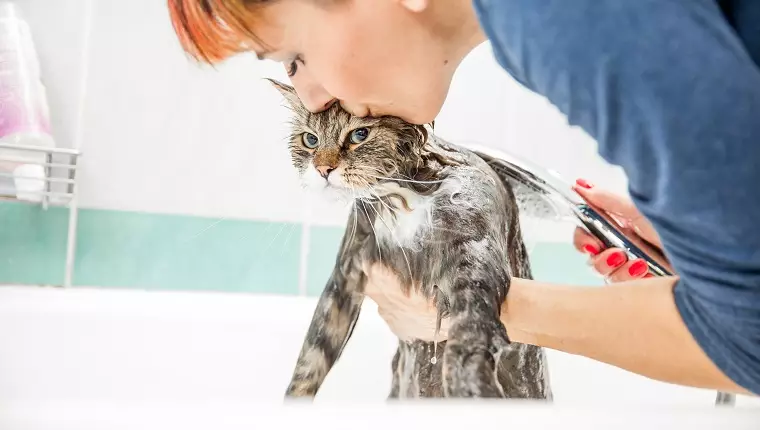Bathing a cat can seem like an intimidating venture for many pet owners. While our feline friends are generally proficient self-groomers, there are instances when a bath becomes necessary. Whether it’s due to an outdoor adventure resulting in a dirty coat, a medical condition, or simply keeping dander under control, knowing how to effectively bathe your cat at home can save both time and money. In this comprehensive guide, we’ll navigate the ins and outs of giving your cat a bath and ensure the experience is as stress-free as possible for both of you.
It’s crucial to recognize that not all cats are the same. Various breeds exhibit differing levels of tolerance towards water; for instance, Maine Coons and Turkish Vans often enjoy splashing around, while most other breeds may feel anxious or stressed when faced with the prospect of a bath. It’s beneficial to acclimate your cat to water from an early age, but even older cats can adapt with patience and proper preparation.
Understanding your cat’s temperament is essential. If your furball has never been bathed, it may be wise to enlist the help of a friend or family member. This added support can help keep the situation calm and controlled, reducing potential stress for both you and your pet.
Before you begin, gather all the necessary materials. This includes cat shampoo (be sure it’s specifically formulated for felines, as dog shampoo can be harmful), towels, a non-slip mat, and a cup or hose attachment for rinsing. Moreover, preparing a warm bath of about four to five inches will ensure your feline buddy is comfortable.
While brushing your cat prior to bathing can help remove tangles and debris, it’s important to remember that wet mats will not come out easily. Take your time to thoroughly brush your cat’s coat for the best results. This step is not just about cleanliness; it’s also about ensuring that your cat feels relaxed and that the bath is a pleasant experience.
Setting the right atmosphere can significantly impact your cat’s bathing experience. Make sure the environment is quiet and free from distractions. If you choose to use a bathtub, a towel at the bottom can provide traction and comfort for your cat. This will mitigate their stress response and make it less likely for them to struggle.
When placing your cat in the water, do so gently and supportively. Avoid the head area initially, focusing your attention on wetting their body from neck to tail. Use a cup or hose to control the water flow, ensuring the temperature is just right—warm, but not too hot.
Once your cat is comfortably wet, apply a generous amount of cat shampoo, lathering carefully over their entire body while avoiding their face. Cats, unlike dogs, are especially sensitive around the head, so be gentle and mindful. Rinsing is equally important; make sure to remove all traces of shampoo to prevent skin irritation.
After rinsing, gently wrap your cat in a towel to absorb excess moisture. Drying is a crucial step as well; avoid using a hairdryer due to the noise and heat. Instead, use towels for a thorough, gentle drying process. If your cat has long hair, you may want to separate this drying step to ensure that they feel as dry as possible without stress.
When the bathing ordeal is complete, immediately offer positive reinforcement. Treats and affection can go a long way in ensuring your cat associates bath time with a positive experience. This encourages a more amicable response in future baths.
Remember that cats can often feel vulnerable after a bath, so maintaining a calm and quiet post-bath environment will help them relax.
Frequency and Special Considerations
Generally, cats are proficient in self-grooming; thus, bathing should not be too frequent—once a month at most unless advised otherwise by a veterinarian. However, certain situations may necessitate more regular baths, such as if your cat has a medical condition or is particularly prone to messes.
In cases of extreme dirtiness, like getting sprayed by a skunk, prompt action is crucial. A quick bath can prevent the smell from becoming more embedded in their fur. Always check with your veterinarian for the best practices in maintaining your cat’s hygiene.
Bathing your cat at home doesn’t have to be an overwhelming experience. With thorough preparation and an understanding of your cat’s needs and temperament, you can create a calm, safe environment that makes bathing not just necessary, but enjoyable. Regular grooming and maintenance will keep both your cat and your living space in prime condition. With these tips in hand, take the plunge and give your kitty the care they deserve!


Leave a Reply